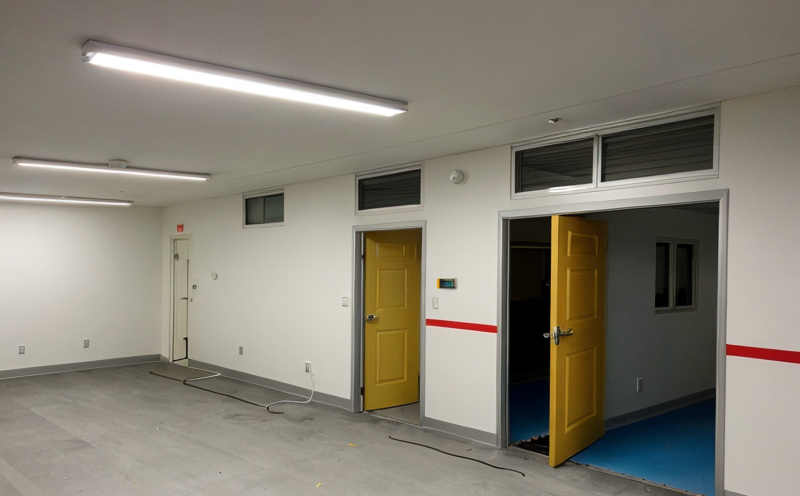IEC 61000 4-11 Voltage Dip and Interruption Testing of Emergency Lighting
The International Electrotechnical Commission (IEC) standard IEC 61000 4-11 specifies the requirements for the testing of electrical systems subjected to voltage dips and interruptions. In the realm of emergency lighting, this standard is critical because it ensures that emergency exit signs, fire alarms, and other safety devices remain operational during power disruptions. This service focuses on the rigorous testing of these devices according to IEC 61000 4-11, which guarantees their reliability in real-world scenarios.
The testing process involves subjecting emergency lighting units to a series of voltage dips and interruptions that mimic actual power failures. The apparatus used includes sophisticated waveform generators capable of simulating the exact nature of these disruptions, such as the duration and severity of the dip or interruption. This ensures that any potential weaknesses in the design can be identified.
The acceptance criteria for this testing are stringent. Devices must not only survive the test conditions but also maintain a minimum level of functionality post-testing. For instance, an emergency exit sign should continue to illuminate during and after the voltage dip or interruption to ensure compliance with safety regulations.
Understanding the context within which these tests are conducted is essential for appreciating their importance. In commercial buildings, hospitals, and other critical infrastructure, uninterrupted access to emergency lighting can be a matter of life and death. Ensuring that these devices meet the stringent requirements set forth by IEC 61000 4-11 not only enhances safety but also builds trust with stakeholders.
The testing process involves meticulous preparation, including the selection of appropriate specimens for testing. The apparatus used in this service includes state-of-the-art equipment capable of generating precise voltage dips and interruptions. The results are meticulously recorded and analyzed to ensure compliance with the standard.
For R&D engineers and quality managers involved in product development, understanding these tests is crucial. Compliance officers can use the results of such testing to ensure that their products meet regulatory requirements, thereby avoiding costly recalls or non-compliance fines. This service provides not only the technical expertise required for conducting these tests but also the comprehensive analysis necessary to interpret the results correctly.
Let's delve into the applied standards used in this testing process:
| Applied Standards |
|---|
|
The testing process is not only about meeting standards but also ensuring that the devices perform reliably under real-world conditions. This service offers a comprehensive approach to testing, combining cutting-edge technology with meticulous attention to detail.
Understanding the quality and reliability assurance measures involved in this service is essential for those involved in emergency lighting design and manufacturing:
- Stringent Testing Criteria: Devices must pass rigorous voltage dip and interruption tests to ensure their reliability.
- Comprehensive Analysis: Post-testing analysis provides detailed insights into the performance of each specimen.
The competitive advantage gained from this service is clear. By ensuring that emergency lighting devices meet or exceed the stringent requirements set by IEC 61000 4-11, organizations can demonstrate their commitment to safety and compliance. This not only enhances their reputation but also helps in securing contracts with discerning clients.
In conclusion, this service provides a critical function in ensuring the reliability of emergency lighting devices under conditions that mimic real-world power disruptions. By adhering strictly to IEC 61000 4-11, we ensure that our clients meet not only regulatory requirements but also exceed them, thereby enhancing safety and compliance.





